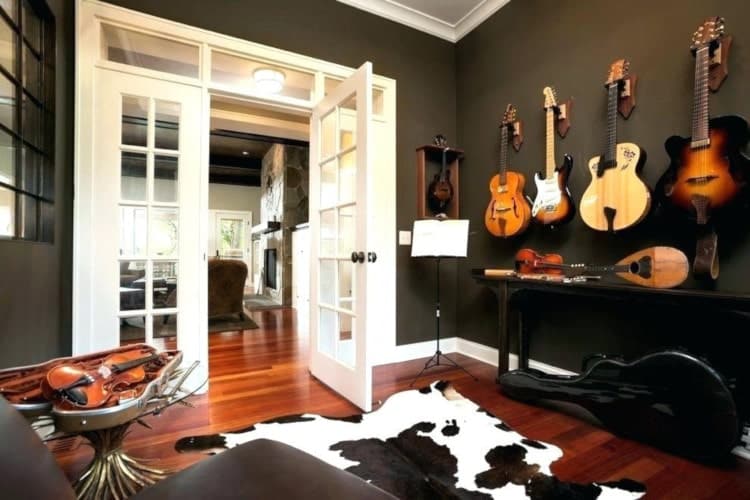 Working musicians figure it out as soon as they get to the venue. The room may be noisy, difficult to work in, loud, ringy, or if they’re lucky it might be pleasant without a lot of echo and bouncing signals. If the sound guy is good, bad rooms with worse flooring can be overcome by careful mixing; if the sound tech is inexperienced, a bad room with equally bad flooring can mean major headaches and a compromised show.
Working musicians figure it out as soon as they get to the venue. The room may be noisy, difficult to work in, loud, ringy, or if they’re lucky it might be pleasant without a lot of echo and bouncing signals. If the sound guy is good, bad rooms with worse flooring can be overcome by careful mixing; if the sound tech is inexperienced, a bad room with equally bad flooring can mean major headaches and a compromised show.
But what about your home? If you’re a music lover, the last thing you want is compromised sound in the place you listen to most of your music, right? The area you live in doesn’t matter when it comes to sound inside your home — this is in your control. You could rent or own an apartment in an affordable market like Milwaukee or in pricey Beverly Hills near legendary recording studios in Los Angeles, but either way, you’re going to need to make the most of quality flooring to get the best sound at home.
What Makes It Work?
Sound absorbing materials help create a nice acoustic atmosphere. These can be curtains at the back of the stage, thick carpeting on the floors—or even the walls—and a soft ceiling. Good rooms have enough of the right kind of wood but not too much. There needs to be a combination of materials that promote a warm sound, and musicians know it when they see it.
For the Audiophile
You agree with Neil Young when he said that the CD era would be known as the “dark ages of recording.” You cringe as your friends listen to music on their tiny smartphone speakers or on some kind of mono speaker. You like tube amps and boutique speakers that project a big fat sound, and you, of course, prefer vinyl.
The problem is that you have moved into a new apartment with ugly ceramic tile flooring and you want to replace it with wood. But which wood flooring products are best for your needs?
The Effects of Wood
While you realize that your ceramic floor is super-lively and not at all good for great sound, remember that wood is also lively, and too much of it can work against what you are trying to achieve. Try a floating wood floor, because with this system the wood is merely laid down over the existing surface. Floating floors use a tongue and groove system, or some other kind of locking mechanism. Regardless, a floating floor–one installed without glue or staples–will absorb sound and work against the natural liveliness of wood.
Alternative
If a floating floor is too expensive, or if for some reason it just won’t work, think carpeting. It isn’t necessary to abandon your wood floor concept; just add a nice room rug and that will definitely calm down the area.
Not Exact
Obviously, you are not going to know what the room will sound like until your project is done. It may still be too bright even with a floating wood floor, and you may want to add curtains or drapes to work against the harshness. You may even want to consider some sound-deadening ceiling panels instead of the hard drywall ceiling prevalent in many apartments.
Regardless, it may take some experimentation with materials and inspiration from other houses or apartments to get things exactly the way you know they could be. Balance the way things look with the way things sound to make sure your great audio system is performing the way it should. Don’t be afraid to add and subtract items like furniture, curtains, and wall coverings until you get it right. And do what makes you happy. After all, creating an awesome sounding home beats spending that money on other home repairs, right!?








